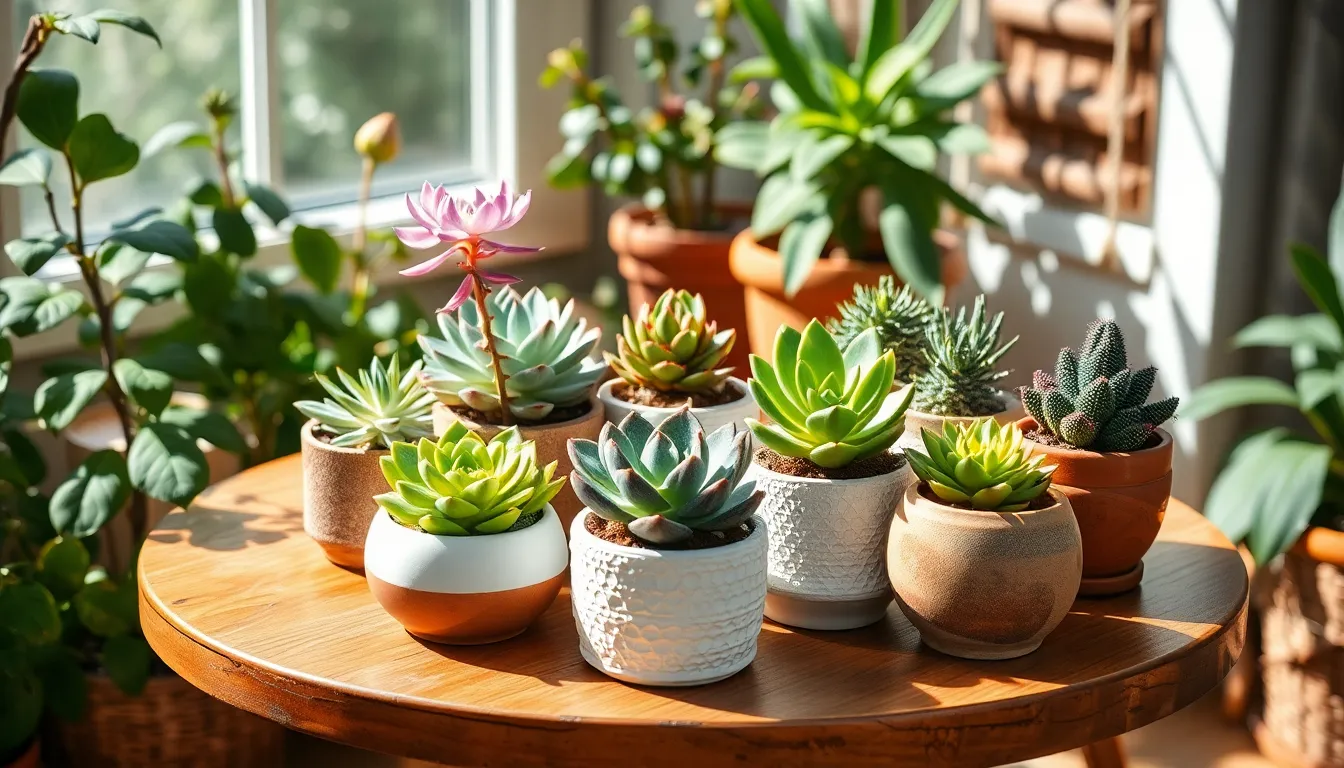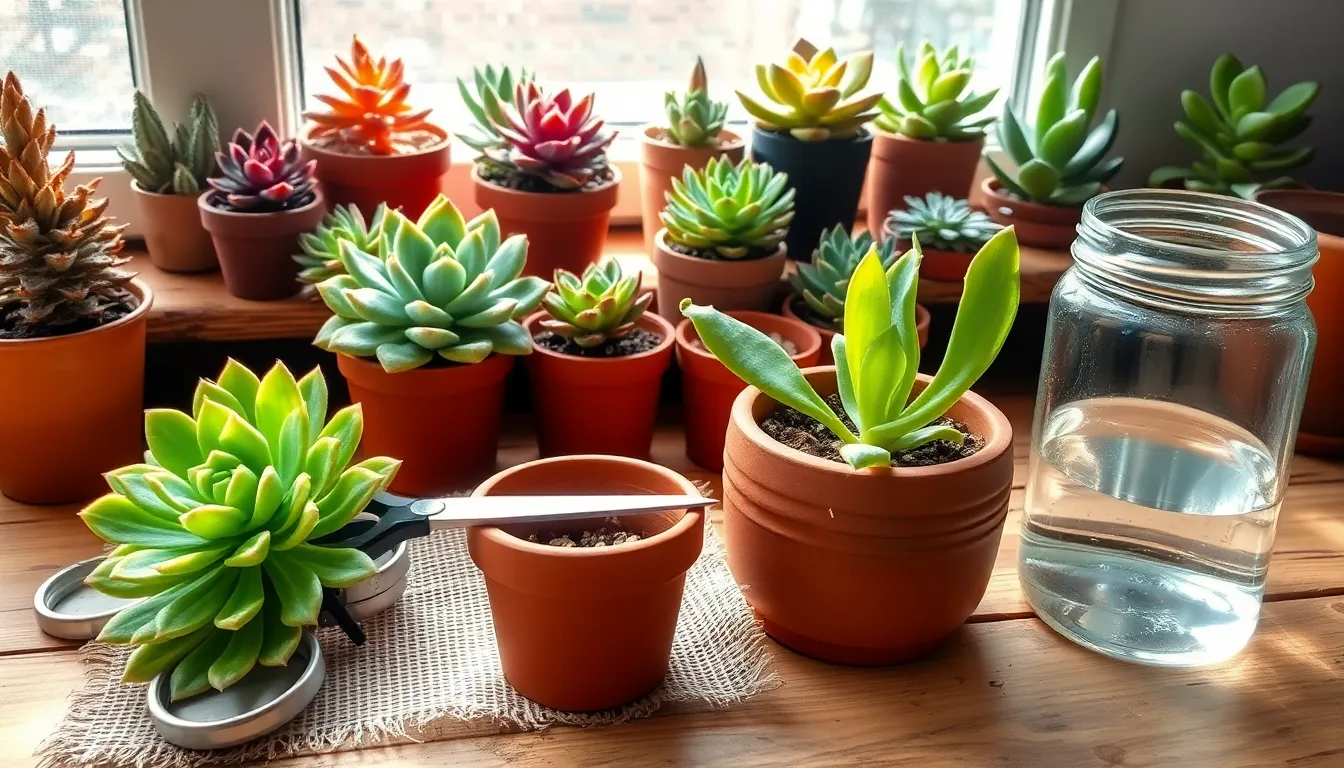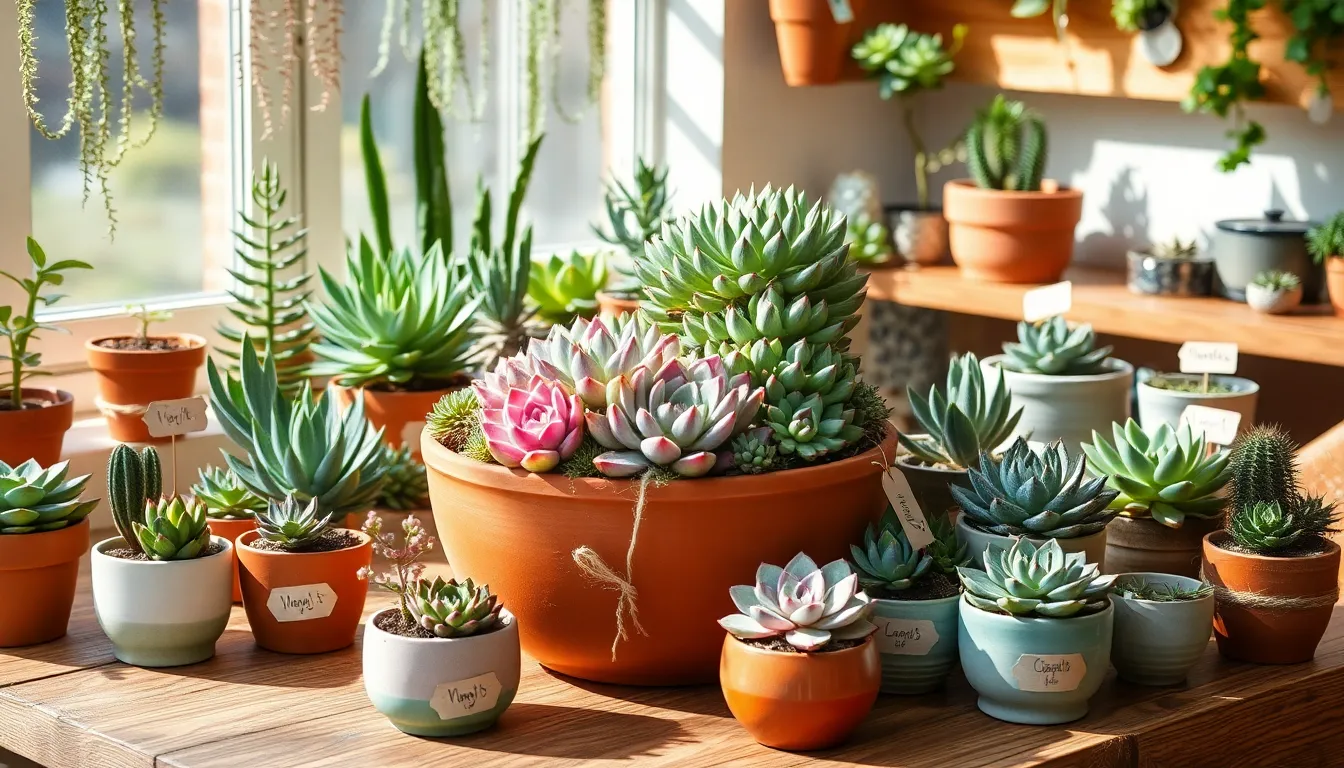Imagine the joy of creating a lush indoor sanctuary that’s not only a feast for the eyes but also safe for your furry companions. Whether you’re just beginning your gardening journey or you’ve already got a green thumb, selecting pet-friendly succulents can be a delightful and rewarding experience. In a world where our pets are cherished family members, ensuring their safety while indulging in our love for plants is a consideration that combines creativity with care.
In this article, you’ll discover eight stunning succulents that are as safe as they are beautiful, offering both peace of mind and aesthetic appeal. From the charming textures to the ease of maintenance, these plants are perfect for those looking to enhance their indoor spaces without compromising on safety. We’ll guide you through the choices, offering insights that can elevate your gardening practice and enrich your home environment. Whether you’re aiming to expand your current collection or start fresh, these pet-friendly options are sure to inspire and delight.
Introduction to Pet-Safe Succulents
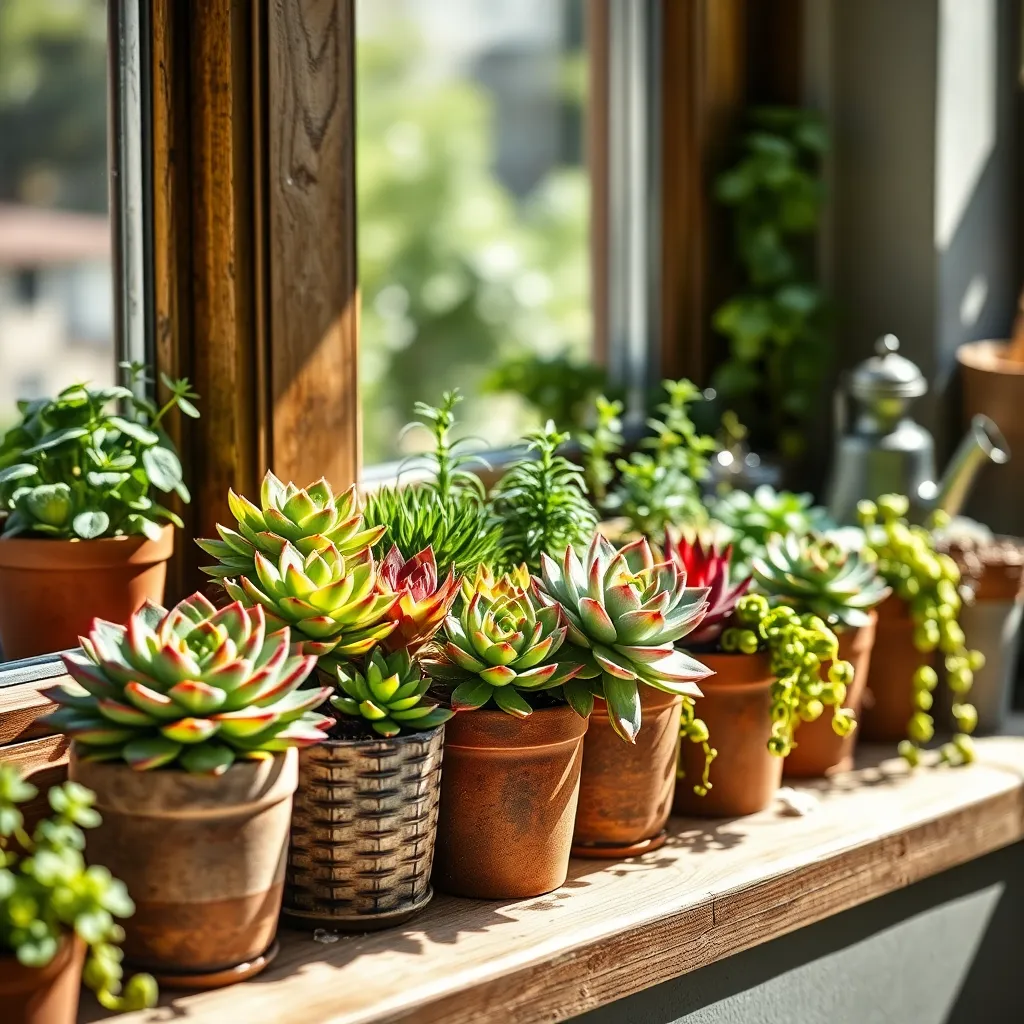
When selecting succulents to grow at home, it’s important to consider the safety of your pets. Some succulents are toxic if ingested, so choosing pet-safe options ensures a harmonious living space for all.
To get started, opt for succulents like the Haworthia, which are known for their non-toxic nature. This plant thrives in well-draining soil—consider using a cactus mix combined with sand or pumice for the best results.
Ensure your succulents receive plenty of indirect sunlight, as excessive direct sun can harm many species. A south or east-facing window usually provides an ideal balance of light for these plants.
Watering is another crucial aspect of succulent care; overwatering is a common mistake. Aim to water your succulents every two to three weeks, allowing the soil to dry completely between waterings.
For those looking to expand their knowledge, consider experimenting with propagation. Many succulents, like the Jade Plant, can be propagated easily from leaves or cuttings, offering a rewarding challenge for more seasoned gardeners.
Finally, always monitor your succulents for signs of distress, such as discolored leaves or mushy stems. These indicators can help you adjust your care routine promptly to keep your plants healthy and thriving.
Choosing Non-Toxic Varieties

When choosing non-toxic succulent varieties for your home, it’s crucial to consider both the safety of your pets and the plant’s growing conditions. Opt for succulents like Haworthia and Echeveria, known for their pet-friendly nature and ease of care.
Start by selecting a well-draining soil mix, as succulents are especially prone to root rot if left in waterlogged conditions. A cactus or succulent-specific soil blend works best, allowing for proper aeration and moisture control.
Light is another significant factor in keeping your non-toxic succulents healthy. Ensure they receive at least five to six hours of indirect sunlight daily, placing them near a bright window or using a grow light if natural light is insufficient.
Watering is also a key component in succulent care, with overwatering being a common mistake. Water your succulents thoroughly but infrequently, allowing the soil to dry completely between waterings.
For beginners, using the “soak and dry” method can be a helpful guideline. This involves soaking the soil thoroughly then waiting for it to dry out completely before watering again, mimicking their natural habitat conditions.
Advanced gardeners might consider propagating their succulents to expand their collection. Many non-toxic varieties, such as the String of Pearls, can be propagated easily from leaf cuttings or offsets.
Finally, maintaining a consistent temperature is vital, as most succulents thrive in a range between 60-80°F (15-27°C). Protect them from extreme temperature fluctuations by keeping them indoors during harsh weather conditions.
Aloe Vera: A Gentle Choice

Aloe Vera is a popular choice for pet-friendly gardens due to its non-toxic nature. This versatile succulent is not only safe for pets but also offers numerous benefits, such as its soothing gel, making it a gentle addition to your plant collection.
When caring for Aloe Vera, ensure it is planted in a well-draining soil mix to prevent root rot. A cactus or succulent mix is ideal, and you can enhance drainage by adding a bit of perlite or sand.
Place your Aloe Vera in a spot where it can receive bright, indirect sunlight. While it can tolerate some direct sun, too much exposure may cause the leaves to scorch, so it’s best to find a balance.
Water your Aloe Vera sparingly, allowing the soil to dry out completely between waterings. During the growing season, typically spring and summer, aim to water about every three weeks and reduce this frequency in the dormant periods.
Haworthia: Safe and Stylish
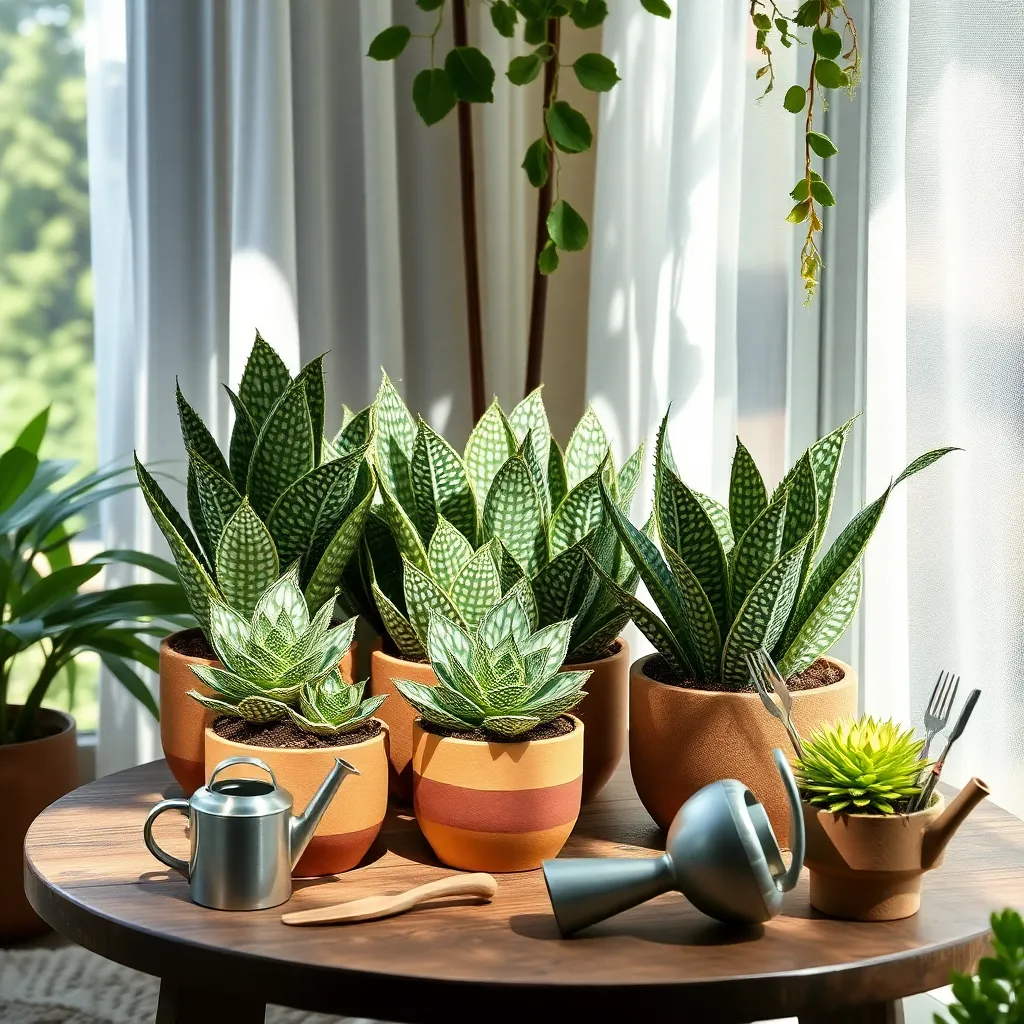
Haworthias are a fantastic choice for pet owners looking for a stylish yet safe succulent. These plants are non-toxic to cats and dogs, making them ideal for homes with curious pets.
To grow Haworthias successfully, place them in an area with bright, indirect light. Direct sunlight can scorch their leaves, so it’s best to avoid placing them on a windowsill that receives strong afternoon sun.
Haworthias prefer well-draining soil, so opt for a cactus or succulent mix to prevent root rot. Water them sparingly, allowing the soil to dry out completely between waterings, which typically means watering every two to three weeks.
For more advanced care, consider fertilizing Haworthias with a diluted succulent fertilizer during the growing season. This will promote healthy growth and more vibrant foliage.
Exploring the Echeveria Family
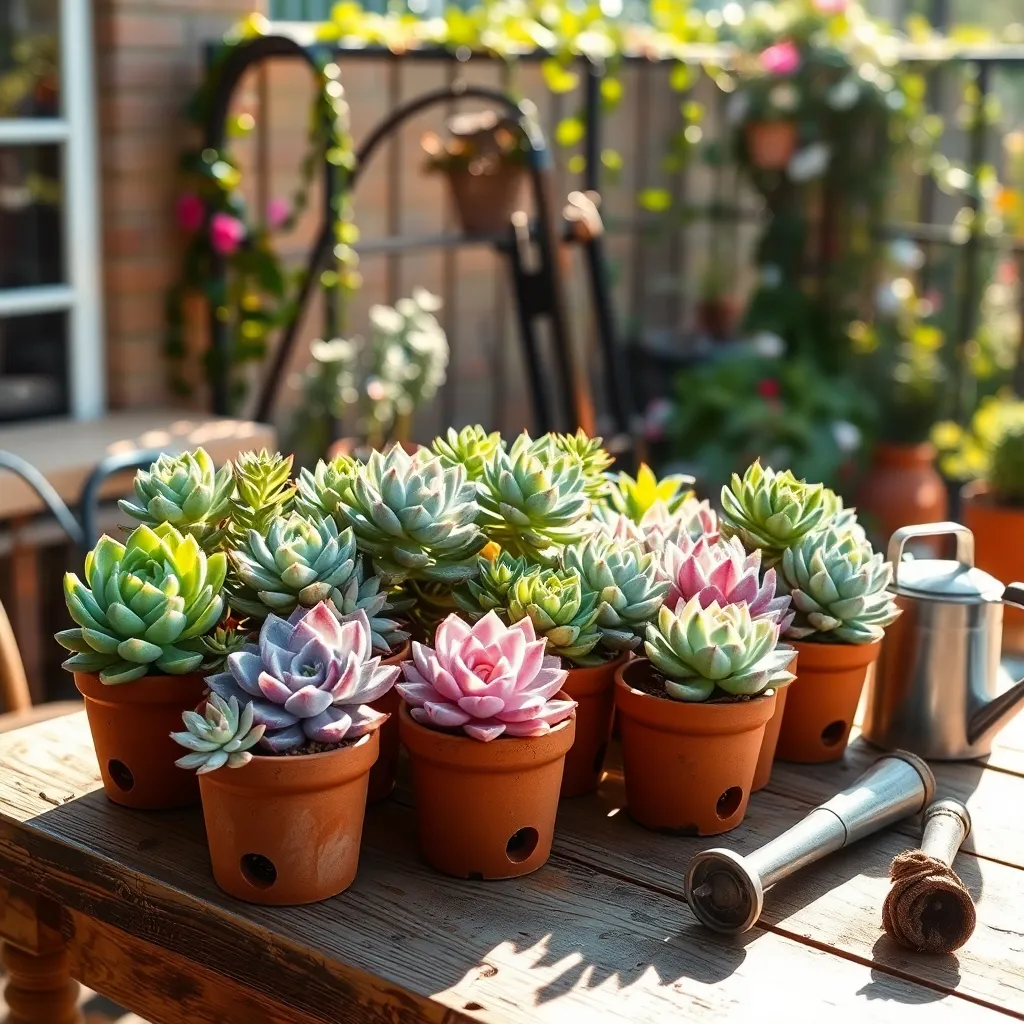
Among the most beloved succulents, the Echeveria family stands out for its vibrant rosette shapes and ease of care. These plants are not only aesthetically pleasing but also safe for pets, making them an excellent addition to a home garden.
Echeverias thrive in bright, indirect light and prefer well-draining soil to prevent root rot. A simple mix of cactus soil combined with perlite will provide the ideal environment for their roots.
Watering is crucial, and overwatering can be a common mistake for beginners. Allow the soil to dry out completely between waterings, typically every two to three weeks, depending on your home’s humidity levels.
Advanced gardeners can experiment with propagating Echeverias from leaf cuttings. Simply let a leaf callous over for a day or two, then place it on top of the soil and mist lightly until roots develop.
Opuntia: A Prickly Yet Safe Option
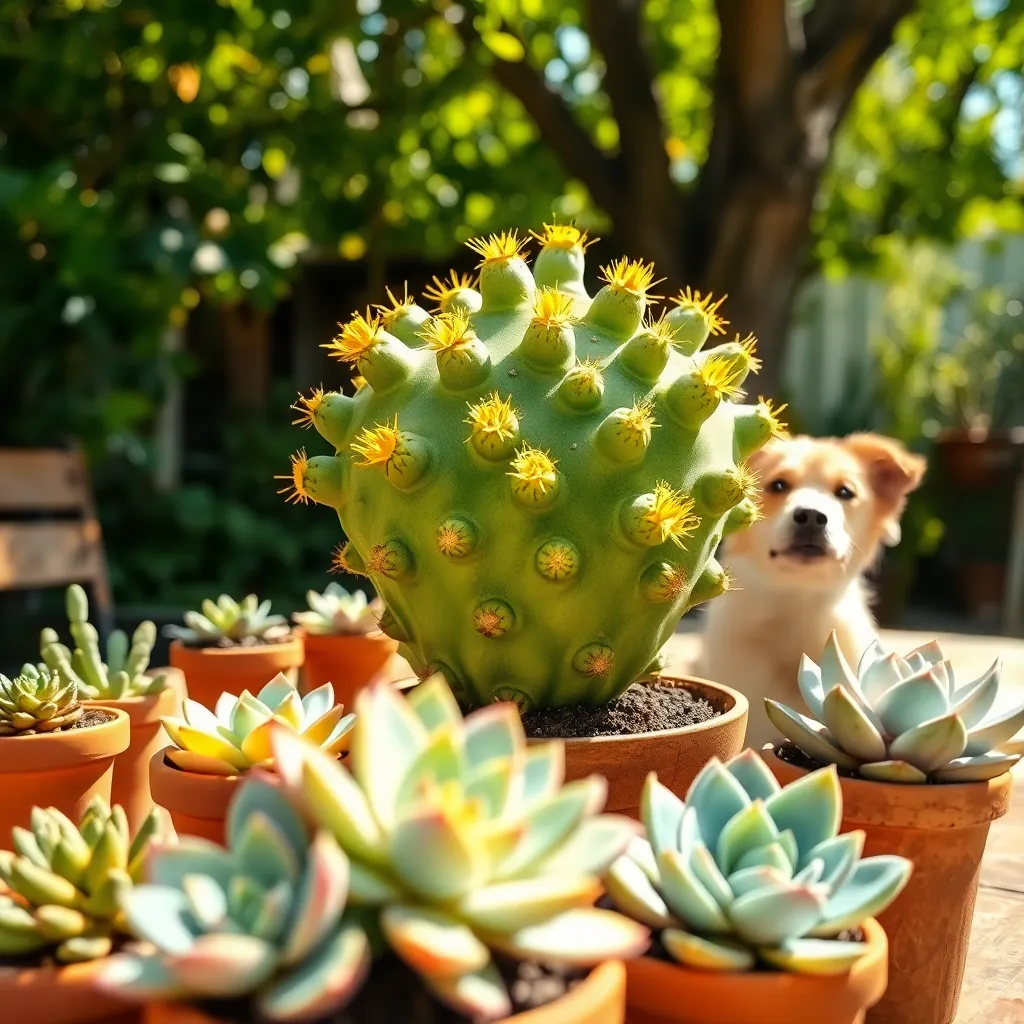
Opuntia, commonly known as prickly pear cactus, offers a unique charm with its paddle-shaped pads. Despite its spines, it’s a safe choice for pet-friendly gardens, as the toxicity level is low compared to other succulents.
When planting Opuntia, it’s crucial to use a well-draining potting mix to prevent root rot. A combination of standard cactus soil mixed with a bit of sand works perfectly to mimic its natural arid environment.
Watering should be done sparingly, as Opuntia thrives in dry conditions. Allow the soil to dry out completely between waterings, and reduce the frequency even further during winter months to protect the plant from overwatering.
For optimal growth, place your Opuntia in a spot where it can receive plenty of sunlight. A south-facing window is ideal, but be mindful of excessive heat, which might cause the pads to scorch.
Caring for Your Pet-Friendly Plants
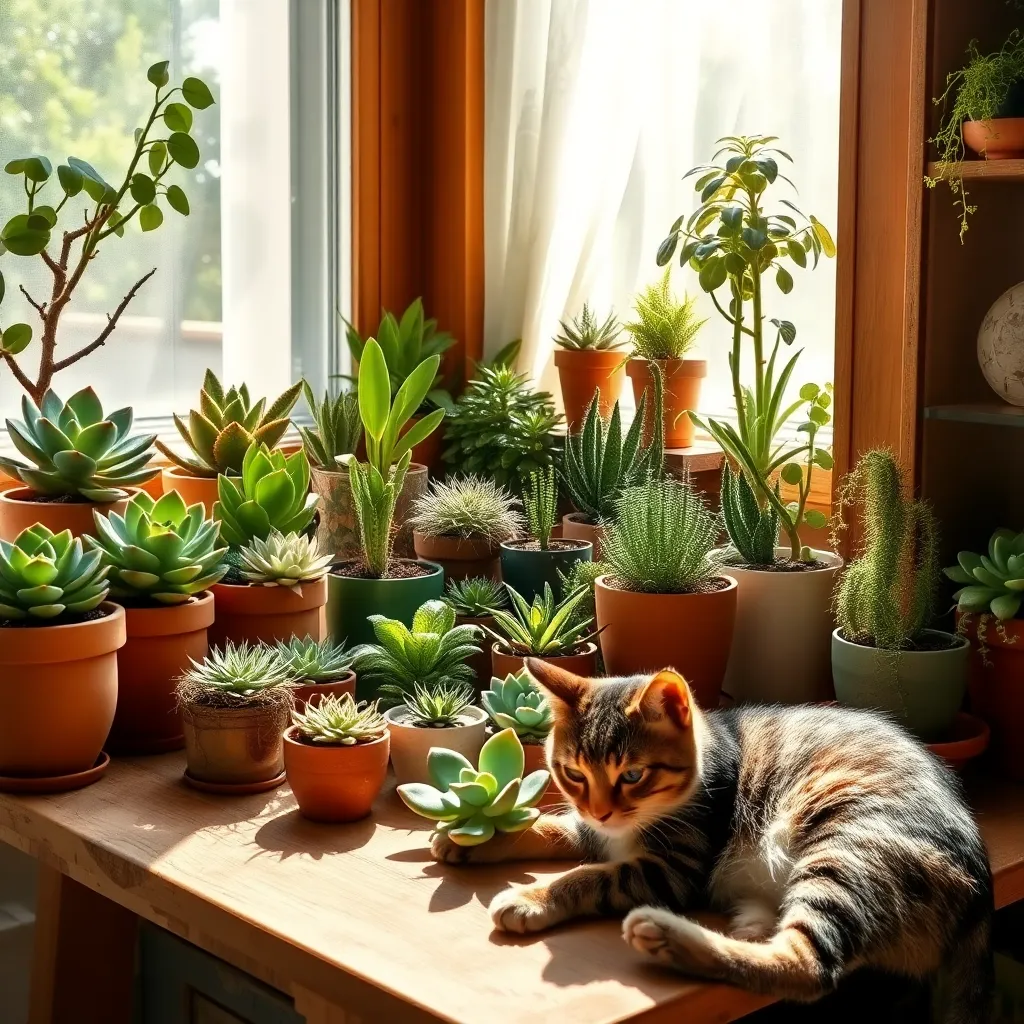
Choosing pet-friendly plants is a fantastic way to ensure the safety of your furry friends while enjoying the beauty of succulents. To keep your pet-safe succulents thriving, focus on providing optimal growing conditions that cater to their specific needs.
Start by selecting a well-draining soil mix, as succulents generally dislike excess moisture. A blend that includes sand, perlite, or pumice can help prevent root rot, a common issue among these plants.
Watering your succulents properly is essential. Allow the soil to dry out completely between waterings, which usually means watering every two to three weeks depending on your climate.
Light is a crucial factor in succulent care, and most varieties prefer bright, indirect sunlight. If natural light is scarce, consider using a grow light to supplement their needs, especially in darker months.
As succulents grow, they may require repotting to accommodate their expanding root systems. Choose a pot with drainage holes and slightly larger than the current pot to give your plant room to grow without overwhelming it.
For advanced gardeners, propagate succulents by gently removing leaves or offsets and letting them dry before planting them in a separate pot. This not only multiplies your collection but also ensures you have a backup in case your main plant encounters problems.
Finally, keep a close eye on your succulents for any signs of distress, such as wilting or discoloration. Regularly inspecting your plants allows you to address issues early, ensuring your succulents remain a safe and beautiful addition to your home.
Creating a Safe Home Environment
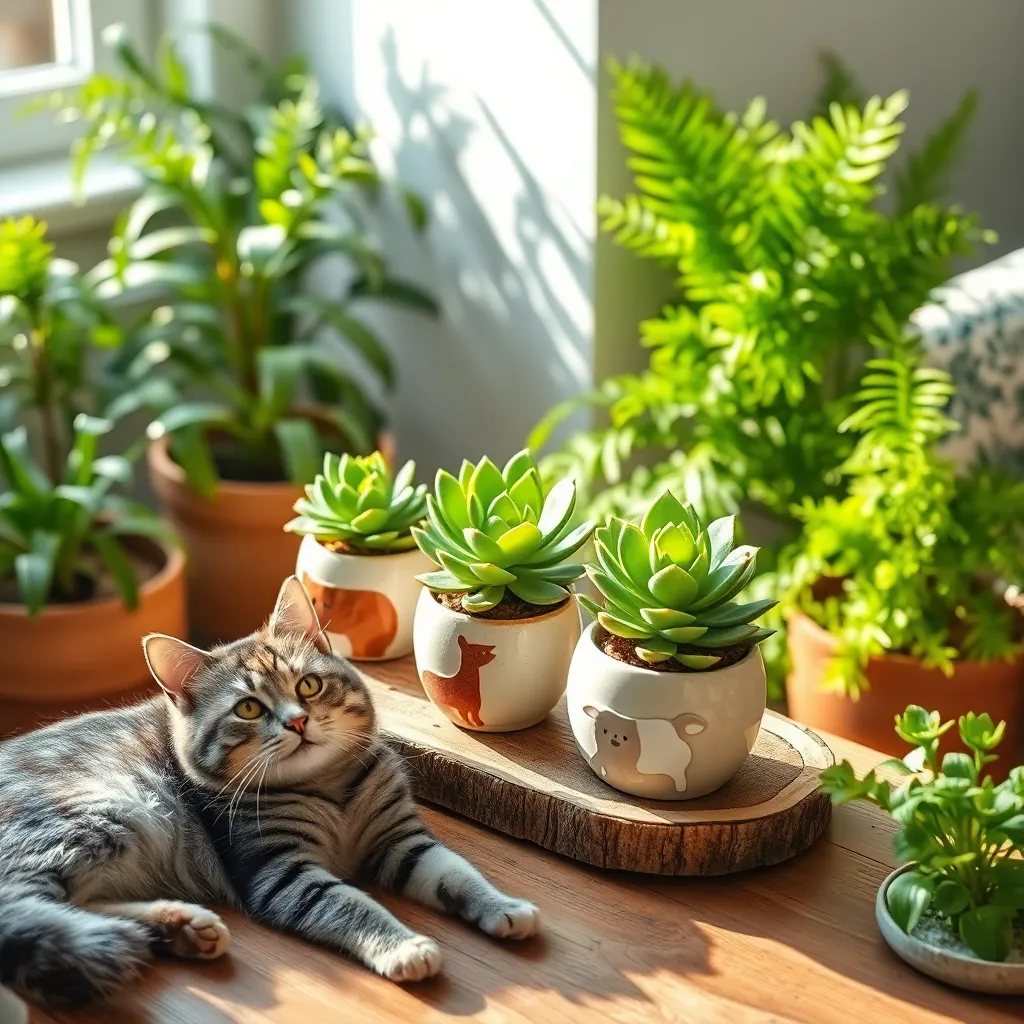
When creating a safe home environment for both your succulents and pets, consider placing the plants in areas that are out of reach of curious paws. High shelves or hanging planters can be excellent solutions to keep plants safe from playful pets while still receiving adequate light.
It’s important to choose pots that are both functional and secure. Opt for heavy, stable pots that are less likely to tip over if nudged by a pet, and ensure they have drainage holes to prevent overwatering.
Consider the types of materials you use around your plants and pets. Avoid using harmful chemicals for pest control or fertilization; instead, explore organic options like neem oil or diatomaceous earth, which are safer for pets.
Monitoring the humidity and temperature in your home can also benefit both your succulents and pets. Succulents generally prefer a dry environment, so placing a dehumidifier nearby can help maintain optimal conditions, while also ensuring your pets are comfortable.
Conclusion: Growing Success with These Plants
In exploring the delightful world of pet-friendly succulents, we’ve discovered eight charming varieties that not only enliven your home but also nurture the relationship between you, your plants, and your beloved pets. From the hardy Haworthia and the vibrant Echeveria to the unique Zebra Cactus and the versatile Ponytail Palm, each succulent offers an opportunity to cultivate a nurturing environment that is safe and beautiful. These succulents are more than just decorative elements; they are living companions that can foster a sense of responsibility and connection.
As a next step, consider selecting one of these pet-friendly succulents to bring into your home. This simple act can enhance your living space and deepen the bond with your furry friends.
Remember to save or bookmark this article for those times when you’re seeking to refresh your home’s greenery without compromising pet safety. As you cultivate these relationships with your plants and pets, you’re sowing the seeds for a harmonious and fulfilling home life. Here’s to growing a future where every relationship thrives—plants, pets, and people alike!

